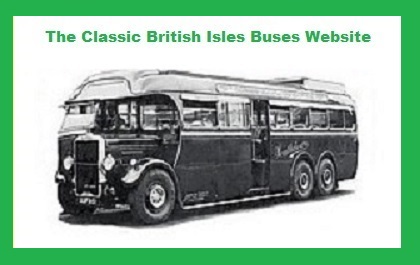

The Classic British Isles Buses Website
Transport in India in 2018: page 3 - trucks, cars, railways, aviation etc (by Dick Gilbert)
Last updated 28 August 2024
Email Events diary Past events list Classified adverts Classic U.K. Buses Classic Irish Buses Classic Manx Buses
In November and December 2018 I made my third trip to the wonderful country of India and visited the southern states of Tamil Nadu (TN registrations), Kerala (KL) and Karnataka (KA). These three pages are a personal view of what I saw in the way of transport, divided into the sections listed above:
In the four years since my last visit I noticed many changes. New names included the joint enterprises of Maruti Suzuki, and Swaraj Mazda trucks and light commercial vehicles. Force vans had appeared along with SML light trucks and Bharatbenz trucks. Ashok, renowned for buses and heavy-duty transport, were now making tiny vans, while Maruti (normally associated with tractors and little wagons) were now building big trucks. It was all new to me, as was the little Mahindra Maxi Cab bus, a couple of whioch aree shown on page 1.
Meanwhile the ubiquitous Ambassador saloon cars were becoming rarer, and examples in the cities could often be very tatty. Our coach for the tour was an Ashok Leyland with Prakash bodywork. This page takes a general view of cars, vans, trucks, trains and aircraft in south india (Tamil Nadu, Kerala and Karnataka states) in 2018.
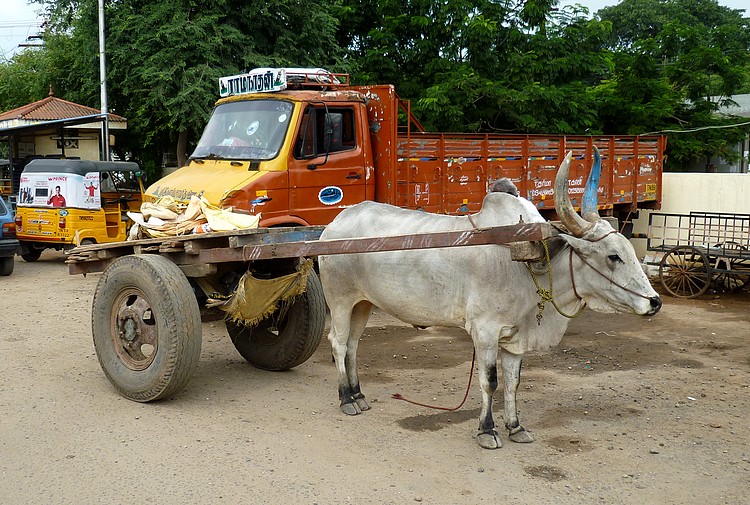
Technology may have moved on, but you can't beat the simplicity of an ox cart. They are still out there in large numbers, and this one was spotted in Madurai.
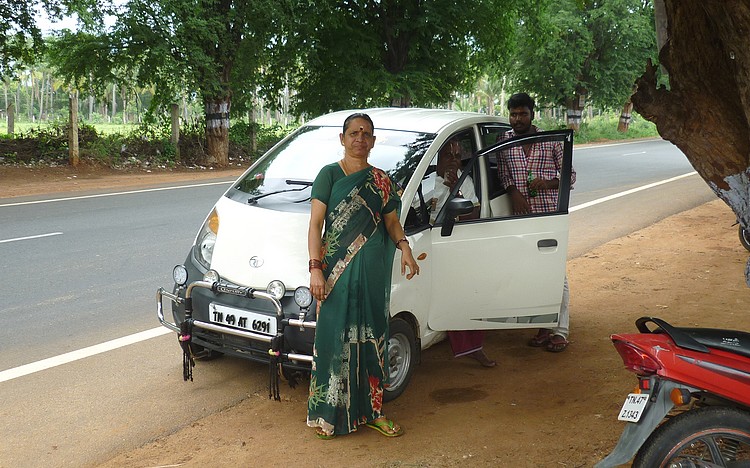
Here is an example of the famous Tata Nano, seen near Thekkady. The Nano was designed as an ultra cheap compact city car which was launched in 2008 at a price of US$2500, intended to replace the classic Ambassador. Unfortunately the project was a flop, and this may have been because car owners didn't want to be seen as someone who could only afford the cheapest car on the market! Production (anticipated to be 250,000 per year) ground to a complete halt in June 2018, but this family seemed happy to pose with their purchase.
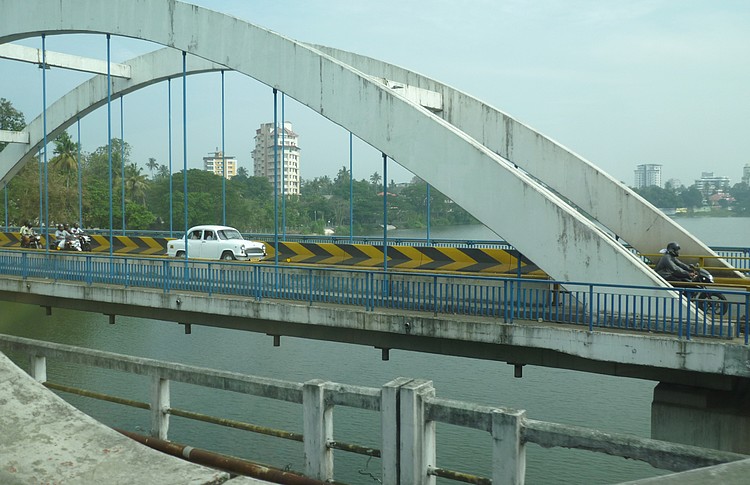
There are still many examples of the legendary Hindustan Ambassador saloon car around, but the numbers are certainly dwindling. Here is one crossing a bridge near the old British hill station town of Ooty (short for Udhagamandalam).
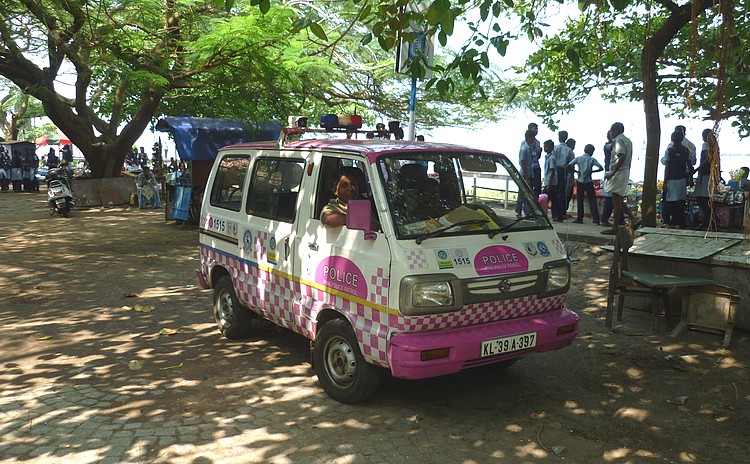
Yet another joint-venture in India is Maruti Suzuki, and they produced this little Omni van, although it is now out of production. What particularly interested many tourists in the port city of Cochin was that this was the pink Police patrol, an all female unit keeping an eye on things by the waterside.

Waiting at the traffic lights are two examples of the Ashok Leyland Dost+ light truck, which was a brand new product when seen here in 2018 in Ooty. It has a 1.5 litre turbo-charged diesel engine and will carry 1.5 tons of cargo, including bananas as you can see (although, knowing India, that's quite likely to be nearer 2 tons...). That looks like another one in the background.
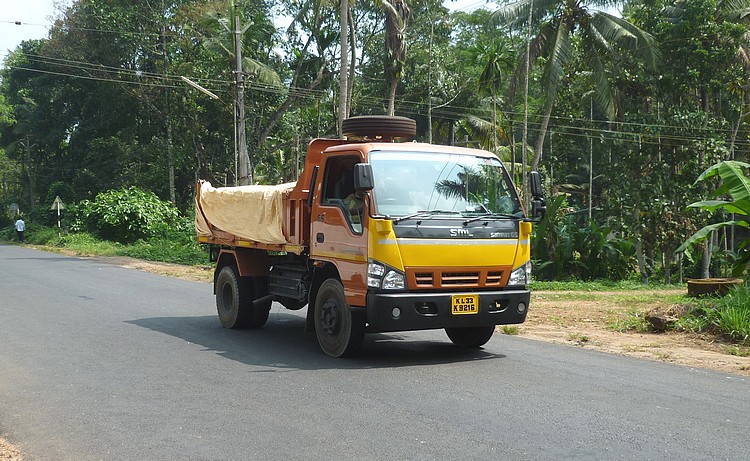
Seen in the countryside near Alleppey is this brand new SML Samrat GS truck. Until this trip I hadn't come across SML although it was founded in Chandigarh in the 1980s and is officially SML Isuzu - yet another Indian joint venture. The Samrat GS is a 10 ton truck with 4.5 litre engine, introduced in 2018.
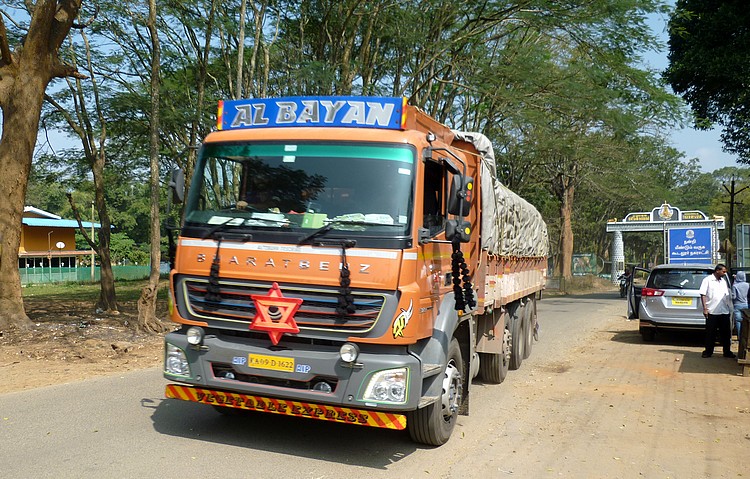
Bharatbenz was another new experience for me - the company, based in Chennai, was formed in 2012 as a subsidiary of Daimler. This truck is probably a 2523R 25-tonner.
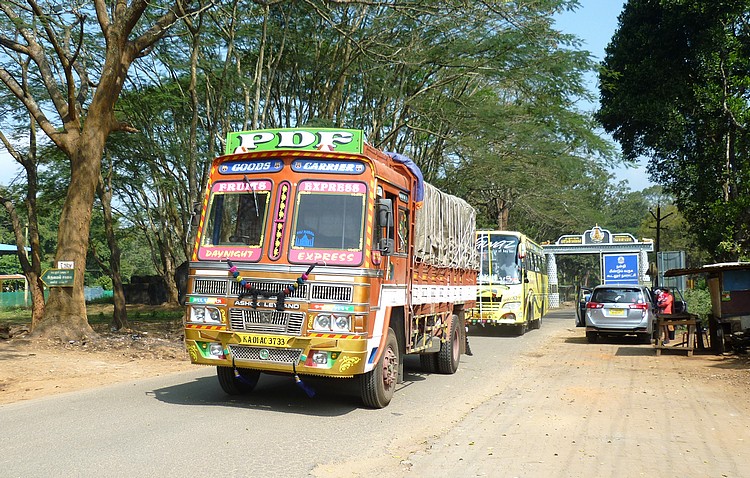
Near Mysore was this rather more traditional Ashok Leyland truck, registered in Karnataka. It certainly dates back a few years but I can't tell you any more about it.
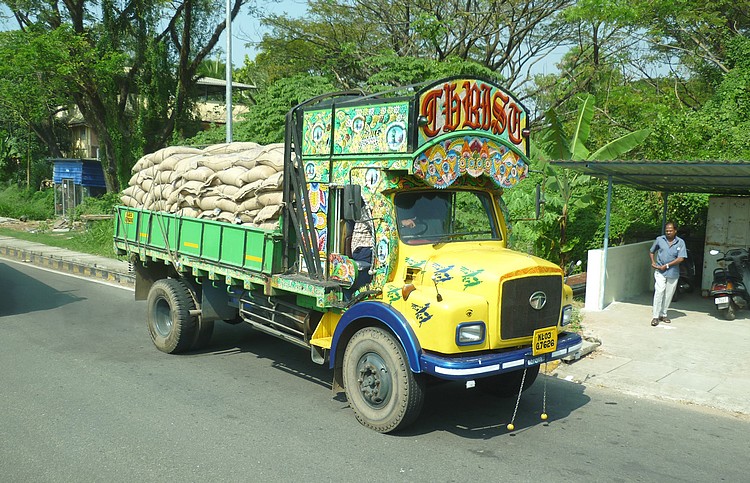
This highly decorated Kerala-registered Tata medium truck (from the modestly-named company CHRIST) was seen in the delightful port city of Cochin. I think it's an SE 1613 - 1613 means a 16 ton load with a 130hp engine.
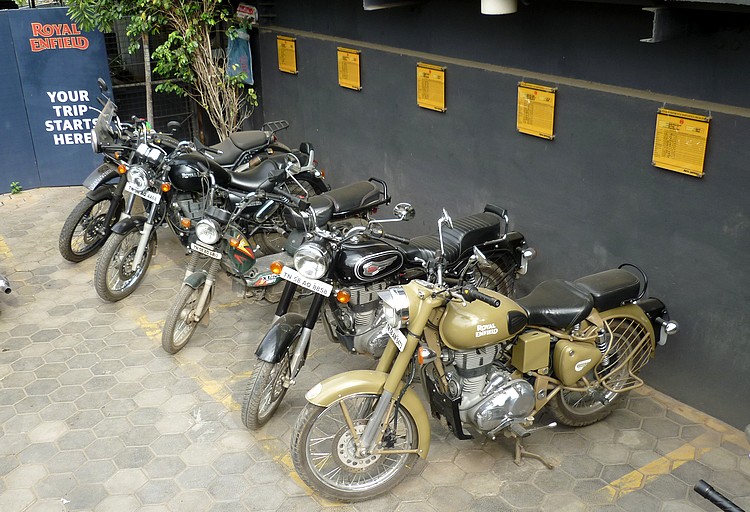
Every town we passed through seemed to have a smart Royal Enfield motorcycle showroom. This one was in Madurai, Tamil Nadu. Enfields were hugely popular and the waiting list for a new one was several months. Here is a row of secondhand examples in case you don't want to join the queue.

This is the Royal Enfield Classic 500 Pegasus Edition in squadron blue. The badge on the tank bears the company slogan, made like a gun.
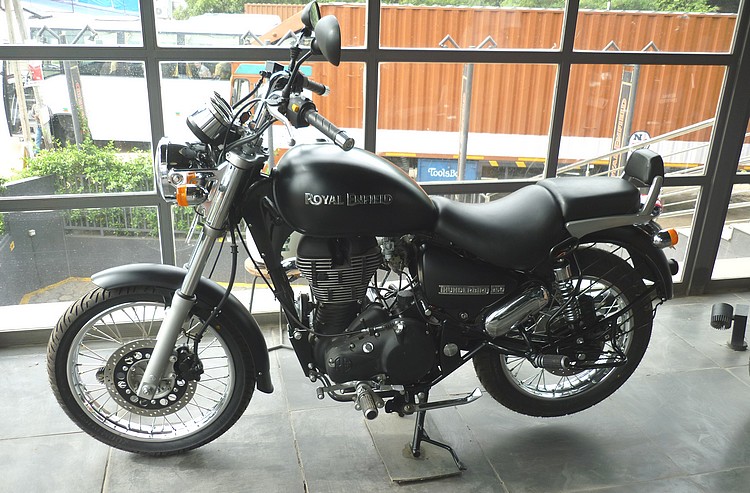
Above is a Thunderbird 350 in stone. New Royal Enfields sell for around £3000 while second-hand examples can fetch about £1800.
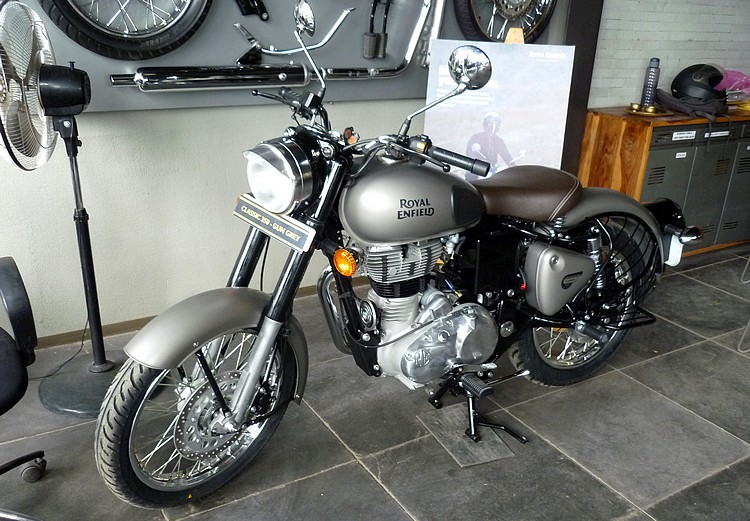
This is a Royal Enfield Classic 350 in gun grey.
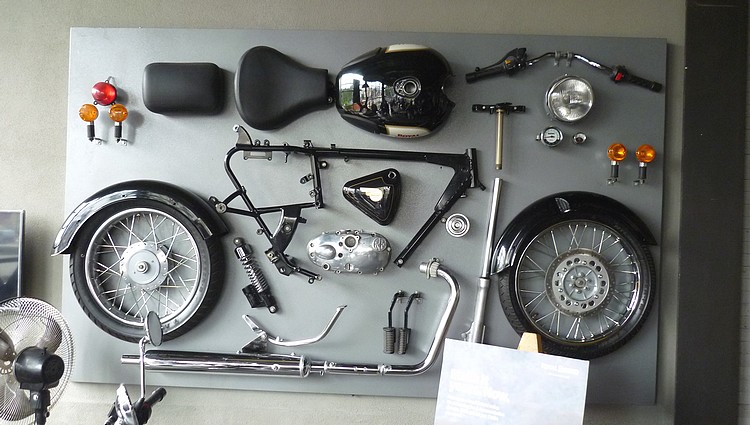
And here are all the bits (apart from the engine).
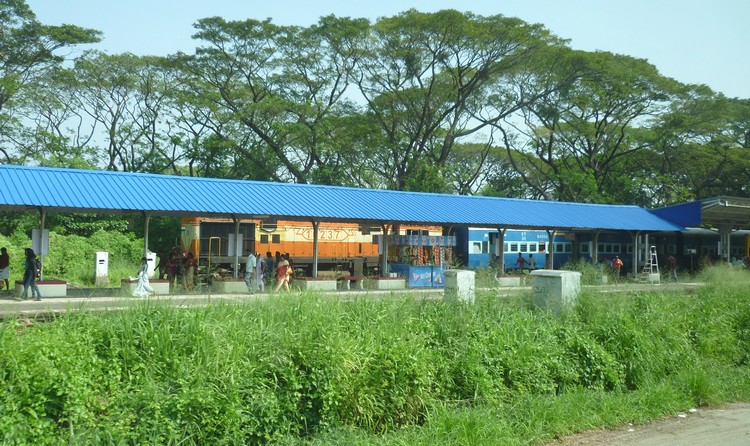
Not a great picture, but the best I could do as we drove past Cochin railway station. Cochin is a broad gauge station on the east coast line of the Southern Railway. The orange bit is Southern Railway WDM-3A locomotive 16237. W = Broad gauge, D = Diesel and M = Mixed traffic. The WDM-3A, made in Varanasi since 1993, is the most widely used loco type in all of India.
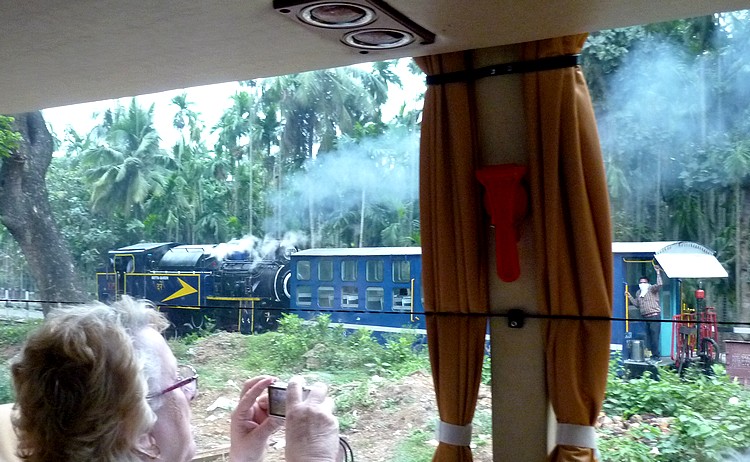
As our coach drove into the hill town of Ooty (short for Udhagamandalam) in Tamil Nadu we had to wait at a level crossing of the Nilgiri Mountain Railway (known locally as the Ooty). In front of us passed a tank locomotive pulling a single passenger coach. This was particularly exciting as the following day we were due to travel on this railway. This was X Class x37397 Betta Queen (Betta meaning mountain), newly refurbished, oil-fired, rack and pinion 0-8-2T loco. It was not as old as it looked, probably being built around 2012. Everyone took pictures out of the window and looked forward to our trip the following day.
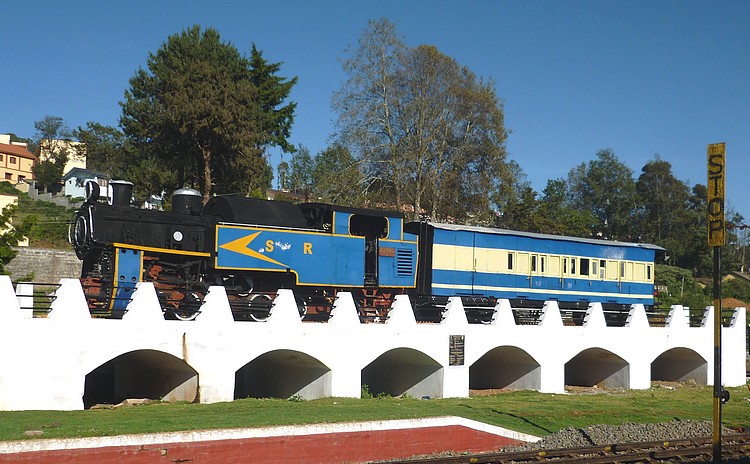
On arrival at Ooty station the next delightful, sunny day to await our train, we saw a retired but preserved tank loco on display. Swiss-built 37386 was one of four X class metre-gauge coal-fired locomotives delivered to the Nilgiri Mountain Railway in 1920, and the passenger coach may be of a similar age.
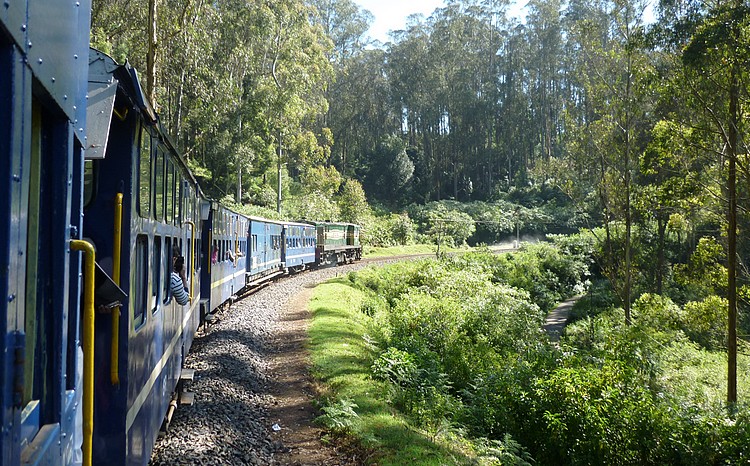
Things then went a bit downhill, in more ways than one (Ooty is at the top of the railway!). First of all our train was hauled by a diesel, which was a bit of a disappointment. The loco is always put at the downhill end of the train for safety reasons.
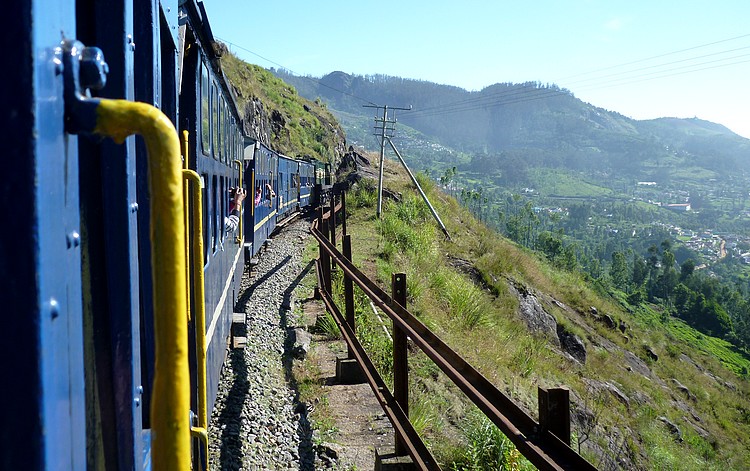
Gradually, as we headed down the hill, the weather became more misty and cold but initially there was enough visibility to recognise that we were travelling through striking countryside.
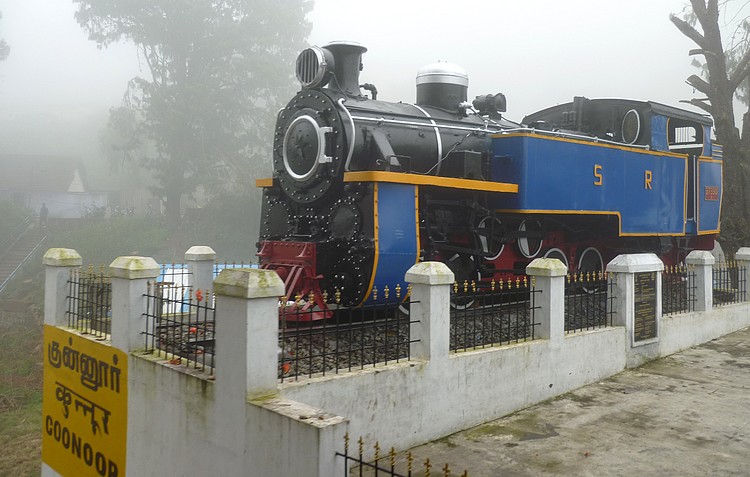
By the time we had descended from Ooty (7200 ft) to Coonoor (about half way down the line at 5500 ft) it was decidedly foggy. At Coonoor station was another 0-8-2T X Class preserved tank loco on display; this one was 37390, one of a pair delivered in 1925.
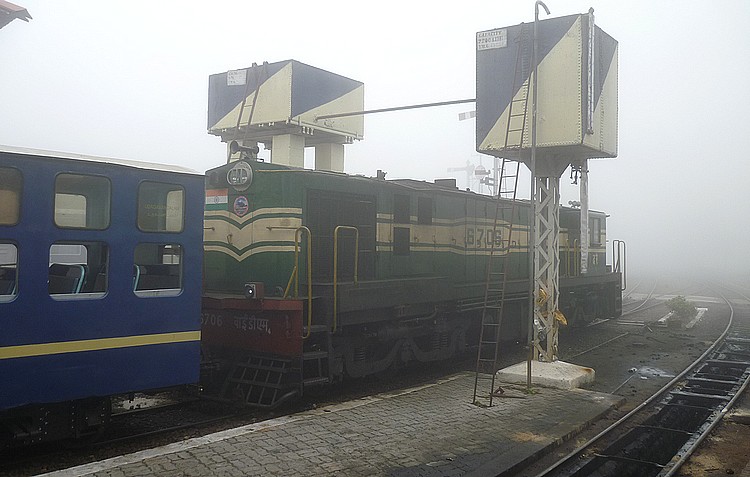
Hiding in the mist at Coonoor station is YDM-4 class diesel loco 6706 which had brought us down from Ooty. This top part of the line normally uses diesels nowadays as it does not require rack and pinion traction and the diesels don't have it. The steeper part from Coonoor to the bottom of the line only uses the steam engines as they have rack and pinion equipment and can travel the full length of the line, so locomotives normally change at Coonoor. Sadly our journey ended at Coonoor and we returned by coach, so no steam for us!
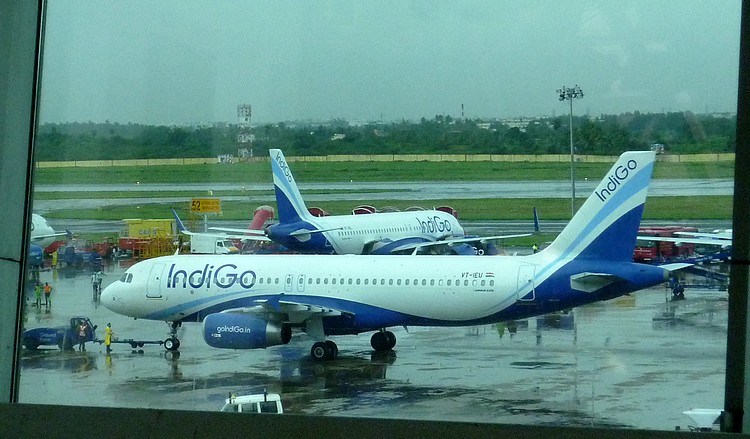
And finally a bit of aviation. We flew from Chennai to Madurai with Indian internal airline Jet Airways, which collapsed five months later. While waiting for the flight we saw a couple of other Indian domestic operators at work including this Airbus A320 (VT-IEU acquired in 2012) of brilliantly named IndiGo.
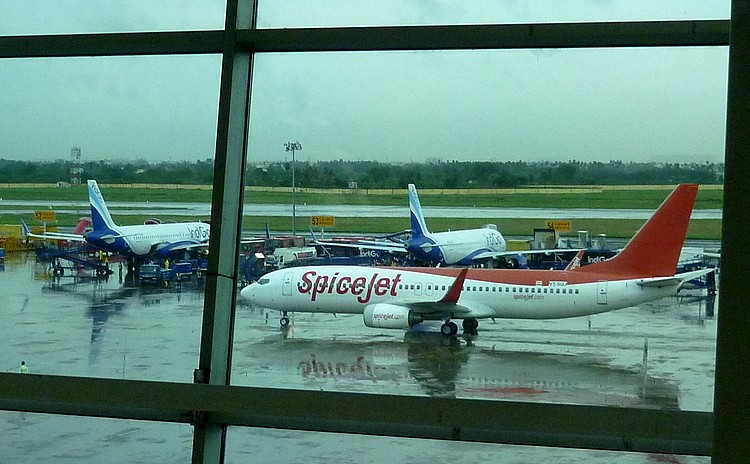
Also at Chennai (in the rain) was this Boeing 737-800 (VT-SGJ, new to Air Berlin as D-ABBP in 2005) flying for SpiceJet - another good name for an Indian Airline, particularly when seen in southern India, renowned for its spices and fine flavours. Their advertising slogan is Red. Hot. Spicy.
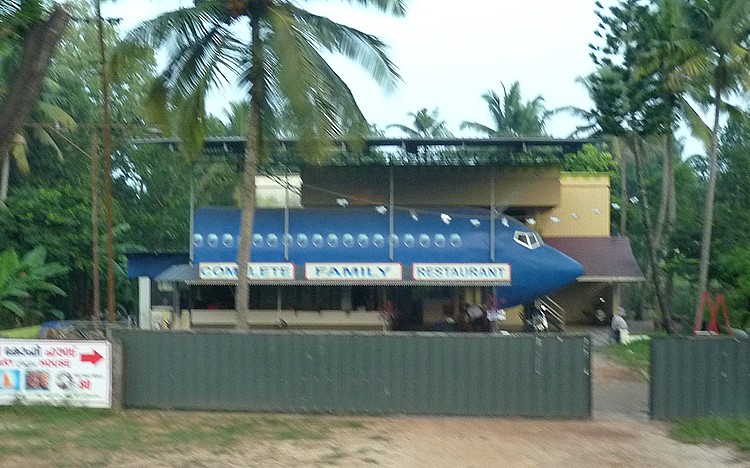
Near Cochin (or Kochi, as it is now known) was this complete family restaurant featuring what looked like the front fuselage of a Boeing 737. Was it the real thing or a fake? Anyway that's all I have for you from my delightful trip to southern India. I hope you enjoyed the ride.
Email Events diary Past events list Classified adverts Classic U.K. Buses Classic Irish Buses Classic Manx Buses